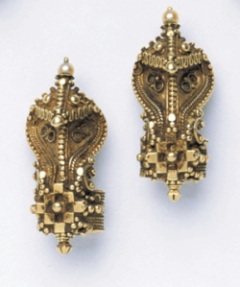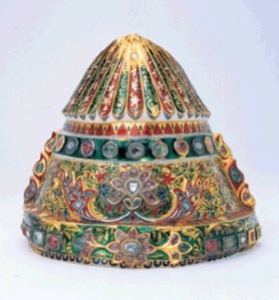Amit Kapoor writes about a new collection of gemset necklaces featured on The Story.
New Delhi: The necklace is a piece of jewelry that has a long history of being worn by both men and women. Necklaces were often used as a way of making distinctions among various cultures.
Historians and archaeologists have discovered that the necklace originated maybe forty thousand years before it was originally believed. Archaeologists believe that the oldest known finding was from 30,000 B.C. It was made of stones, animal teeth, bones, claws and shells strung onto thread, similar to the concept of today’s necklaces.
Later, in 2500 B.C., necklaces began to be made from precious metals like gold. The ancient Egyptians made necklaces ranging in complexity from simple strings of beads to highly complicated patterns set with a variety of precious and semiprecious materials. They also had the broad collar and pectoral type of necklaces that both men and women wore, especially the wealthy and royalty. These necklaces were often richly ornamented and were an important part of Egyptian attire. Many of these necklaces were buried with their owner when they died and were excavated several centuries later providing critical information about this ancient civilization.
Gold was abundant in the ancient Greek Empire, particularly during the rule of Alexander the Great. The ancient Greeks used gold to fashion necklaces and many other types of jewelry for many centuries. During the first century A.D., the Roman style of jewelry, which used gemstones cut in circular or rectangular shapes, became popular.
Later on, it became a fashion for women to wear several necklaces at once. The greater this number, the higher the level of wealth or class it indicated. For a few years, the popularity of necklaces waned until the late 14th century, when they regained popularity.
Now, necklaces are popular among all cultures and peoples. Necklaces are worn for a variety of reasons. The most widespread of course is personal ornamentation. Another important reason people wear necklaces is for their religious significance. Necklaces with images of Saints or a simple cross are among the most widely used in this category.
Necklaces have been around for many, many years and will most likely remain so as they are a versatile type of jewel that can constantly be reinvented to stay trendy. They have been made from everything from animal bones and teeth to rare gemstones, from shells and beads to metals and resins.
Adorned, a collection currently featured on The Story includes an eclectic selection of necklaces set with unique gemstones like variously coloured quartz, agate, turquoise, labradorite, fluorite and ammonite in quirky designs.






